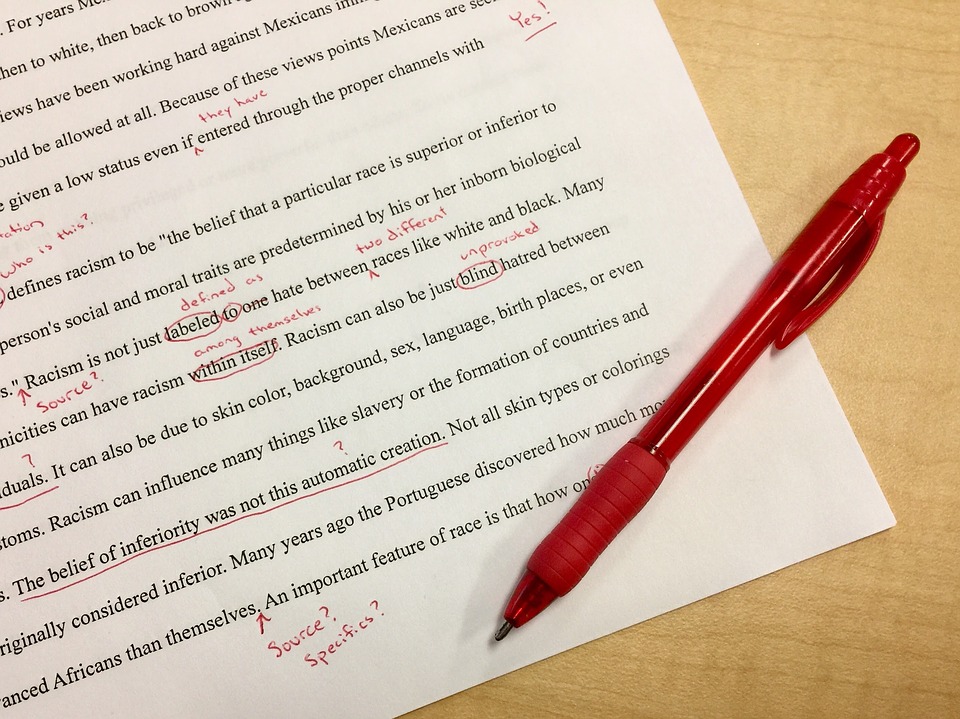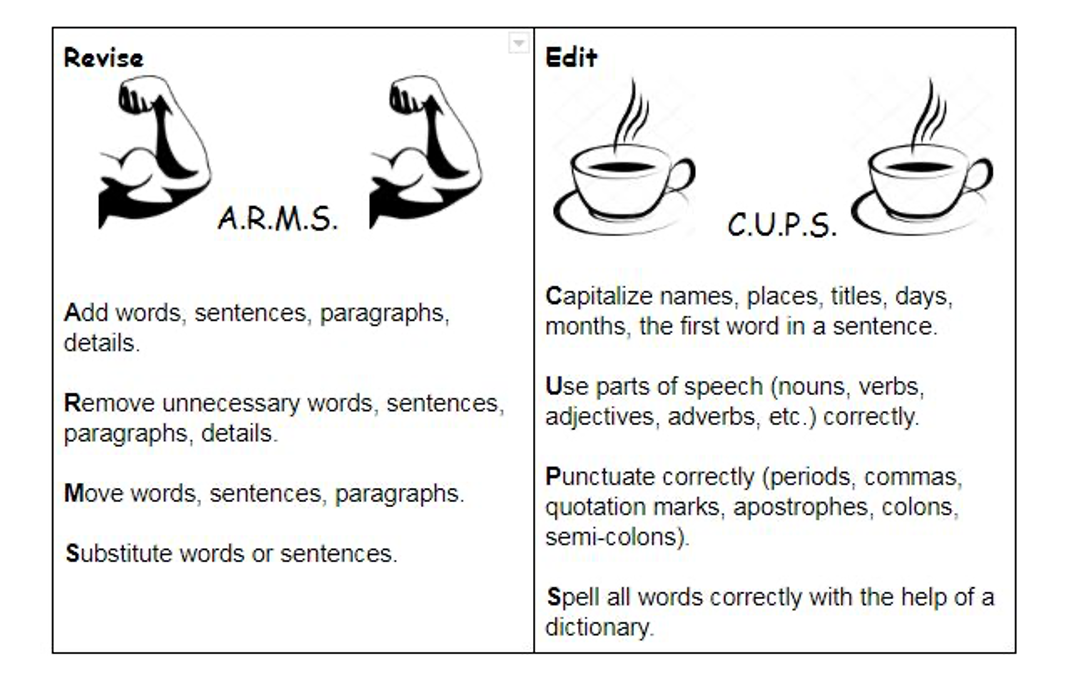Tutor Ready Writing - Introduction to Writing Plans
Introduction
- What is Writing?
- Tutor Planning
- Learner Writing
- Tutoring Adult Learners Who Don't Read or Write in Their Native Language
However, all of the learning plans are relevant to all kinds of adult literacy and English as a Second language tutoring.
Feel free to go through the learning plans in any order. Plan to go back and review those that are relevant to issues that come up at different times.
A good place to start is with an overview of the writing process, which is next.
Enjoy!
A generous grant from the Dollar General Literacy Foundation supported the development of these learning plans. The U.S. Department of Education supported much of the writing research upon which the learning plans are based. The views expressed herein do not necessarily represent the positions or policies of the Dollar General Literacy Foundation or the U.S. Department of Education. No official endorsement by the Dollar General Literacy Foundation or the U.S. Department of Education of any product, commodity, service or enterprise mentioned in the learning plans is intended or should be inferred.
All images herein are licensed for use through signed waivers by subjects or through Creative Commons.
For more information, contact Paul Heavenridge, Executive Director of Literacyworks, 625 Second Street, Suite 107, Petaluma, CA 94952 (707) 981-8086 info@literacyworks.org

A generous grant from the Dollar General Literacy Foundation supported the development of these learning plans. The U.S. Department of Education supported
much of the writing research upon which the learning plans are based. The views expressed herein do not necessarily represent the positions or policies of the Dollar
General Literacy Foundation or the U.S. Department of Education. No official endorsement by the Dollar General Literacy Foundation or the U.S. Department of Education of
any product, commodity, service or enterprise mentioned in the learning plans is intended or should be inferred.
All images herein are licensed for use through signed waivers by subjects or through Creative Commons.
For more information, contact Paul Heavenridge, Executive Director of Literacyworks, 625 Second Street, Suite 107, Petaluma, CA 94952 (707) 981-8086 info@literacyworks.org
- - - -
These learning plans are grounded in the most current writing research available, particularly the following resources:
Improving Adult Literacy: Developing Reading and Writing
This booklet presents an overview of what is known about how literacy develops, the component skills of reading and writing, and the practices that are effective for developing them.
It also describes principles of reading and writing instruction that can guide those who design and administer programs or courses to improve adult literacy skills. Although this is
not intended as a "how to" manual for instructors, teachers may also find the information in this booklet helpful as they consider how to plan instruction.
The principles described here apply to all adult literacy learners, including those learning English as a second language and those with learning disabilities. This booklet also
includes specific principles to guide instruction for those groups of learners.
National Research Council (2012), National Academy of Sciences
Resource URL: http://www.nap.edu/catalog.php?record_id=13468
Teaching Excellence in Adult Literacy (TEAL) Just Write! Guide
The TEAL Just Write! Guide provides research-based instructional practices in writing instruction.
Corley, Mary Ann, and Silver-Pacuilla, Heidi (2012), Teaching Excellence in Adult Literacy (TEAL) Just Write! Guide. American Institutes for Research
Resource URL: TEAL_JustWriteGuide.pdf
Writing to Read: Evidence for How Writing Can Improve Reading
This report provides long-needed guidance for teachers and policymakers by identifying specific writing practices that enhance students’ reading abilities. Its findings
show that having students write about texts they read, explicitly teaching writing skills and processes, and having students write more do improve
reading skills and comprehension.
Graham, S., and Hebert, M. A. (2010), Writing to read: Evidence for how writing can improve reading. A Carnegie Corporation Time to Act Report. Washington, DC: Alliance for Excellent
Education.
Resource URL: ccny_report_2010_writing.pdf
Writing Next: Effective Strategies to Improve Writing of Adolescents in Middle and High Schools
This report identifies 11 elements of current writing instruction found to be effective for
helping adolescent students learn to write well and to use writing as a tool for learning.
Graham, S., & Perin, D. (2007), Writing Next: Effective Strategies to Improve Writing of Adolescents in Middle and High Schools – A Report to Carnegie Corporation of New
York. Washington, DC: Alliance for Excellent Education.
Resource URL: s/ccny_report_2007_writing.pdf
Improving Adult Literacy Instruction: Options for Practice and Research
National Research Council (2012), Improving Adult Literacy Instruction: Options for Practice and Research . Washington, DC: The National Academies Press.
Resource URLhhtps://doi.org/10.17226/13242
This report synthesizes the research on literacy and learning to improve literacy instruction in the United States and to recommend a more systemic approach to research, practice
and policy. It identifies factors that affect literacy development in adolescence and adulthood in general, and examines their implications for strengthening literacy instruction for
this population. It also discusses technologies for learning that can assist with multiple aspects of teaching, assessment, and accommodations for learning.
The Writing Process
Many emerging or struggling writers feel overwhelmed by the thought of writing, especially if they have to write an essay, story or formal piece of writing. They think good writers just write one draft that is perfect from the start. They don’t realize that writing is a multi-step process that includes lots of thinking and re-thinking, writing and re-writing. Writing is made up of lots of small steps that help make the whole process much more manageable for all writers, including your learner.
It’s important for you to help your learner understand that writing isn’t linear. It’s an iterative process that cycles back on itself multiple times. This chart
illustrates this process.

The chart is adapted from http://www.lirvin.net/WGuides/wprocess.htm
The writing process is made up of the following steps:
- planning/pre-writing
- drafting
- revising and feedback
- editing
- publishing (final product)
Click here to watch a brief, humorous video that summarizes the steps in the writing process.
What is Writing Part One?
The Writing Process
Many emerging or struggling writers feel overwhelmed by the thought of writing, especially if they have to write an essay, story or formal piece of writing. They think good writers
just
write one draft that is perfect from the start. They don’t realize that writing is a multi-step process that includes lots of thinking and re-thinking, writing and re-writing.
Writing is made up of lots of small steps that help make the whole process much more manageable for all writers, including your learner.
It’s important for you to help your learner understand that writing isn’t linear. It’s an iterative process that cycles back on itself multiple times. This chart
illustrates this process.

The chart is adapted from http://www.lirvin.net/WGuides/wprocess.htm
The writing process is made up of the following steps:
- planning/pre-writing
- drafting
- revising and feedback
- editing
- publishing (final product)
Click here to watch a brief, humorous video that summarizes the steps in the writing process.
Click here to watch a tutor and learner discussing the
steps in the writing process.
Click here to watch a video of a tutor and learner
demonstrating the Quick Write Strategy.
Click here to watch a video of a tutor and
learner demonstrating the strategy Asking defining questions.
What is Writing Part Two?
Planning/Pre-writing

Many adult learners want to launch into writing a text without thinking about what they want to say or how they want to say it. It’s fine to write this way if you’re
scribbling a shopping or to-do list, but most other writing requires planning to make sure the writer clearly communicates his/her message. This planning can be done in a variety of ways,
depending on the kind of text the writer is writing. The pre-writing stage of the writing process is messy and takes time. Correct spelling and grammar aren’t important here. The
most important thing at this stage is for your learner to get his/her ideas onto the page using whatever strategy works best.
- Journaling
- Freewriting
- Brainstorming
- Mapping or diagramming
- Listing
- Outlining
- Asking defining questions
- Noting Pros & Cons
- Responding to a text
Click here to learn more about each strategy.
Click here to watch a short video demonstrating an
example of freewriting and mapping.
Click here to watch a video of a tutor and learner demonstrating the strategy of freewriting/ Quick writes.
Click here to watch a video of a tutor and learner demonstrating the strategy of Asking Defining Questions.
Click here to watch a short video on pre-writing.

Another aspect of the planning/pre-writing step in the writing process is to
answer the following questions:
- What is the purpose for the writing? Why am I writing?
- Who is my audience? Who will read what I’m writing?
- What “voice” should I use when I’m writing? How do I want to sound? What tone do I want to use? Formal? Informal? Authoritative? Persuasive?
- What is my message? What do I want to say in my writing?
At every stage of the writing process a writer must keep these questions in mind. They guide his/her thinking about a topic, help him/her plan the writing and keep him/her on track if the writing goes astray.
Click here to learn more about how to think more about writing for a particular audience for a particular purpose.
Click here and here to learn more about "voice", the words and tone you choose when you write.
Click here to watch a video of a tutor and learner discussing Purpose/Audience/Voice/Message.
Drafting
 Drafting is writing
different versions of a text. The first draft is never the final, complete draft. It’s just the place a writer uses the plan from the pre-writing stage to begin writing down his/her
thoughts in complete sentences organized in a logical and sequential manner. The number of drafts a writer writes goes back to the reason for writing a text and who will read it. If the text
is just for you and your learner to read and is just part of your ongoing writing activities, there may be only one or two drafts. But if the text is going to be “published” or
read by others for some important reason, like a business letter or story for a book of learner writings, there may be several drafts of the same text.
Drafting is writing
different versions of a text. The first draft is never the final, complete draft. It’s just the place a writer uses the plan from the pre-writing stage to begin writing down his/her
thoughts in complete sentences organized in a logical and sequential manner. The number of drafts a writer writes goes back to the reason for writing a text and who will read it. If the text
is just for you and your learner to read and is just part of your ongoing writing activities, there may be only one or two drafts. But if the text is going to be “published” or
read by others for some important reason, like a business letter or story for a book of learner writings, there may be several drafts of the same text. Drafts are never perfect! They will usually need to have lots of changes made, especially the early drafts. As a writer writes, new ideas come to mind. Each draft incorporates those new ideas. Sometimes a writer decides to discard some early ideas in later drafts. The drafting step of the writing process is where your learner can take as much time as s/he needs to play around with writing without the pressure of perfect grammar, spelling, punctuation and sentence structure. Your learner won’t need to pay attention to those aspects of writing until later in the writing process during the editing stage.
 As we saw
in the writing process graphic, writers move back and forth between the drafting and revising steps of the writing process. A writer writes a first draft of a text, then revises it after
reading it over and thinking of new ideas and/or deciding to change the direction of the text or to add or delete details. The writer might decide to change how the information is presented to
the reader by changing the order of sentences or even whole paragraphs. This is the time a writer pays attention to which word is the perfect word to use, even if s/he doesn’t take the
time to make sure it’s spelled correctly at this stage of the writing process.
As we saw
in the writing process graphic, writers move back and forth between the drafting and revising steps of the writing process. A writer writes a first draft of a text, then revises it after
reading it over and thinking of new ideas and/or deciding to change the direction of the text or to add or delete details. The writer might decide to change how the information is presented to
the reader by changing the order of sentences or even whole paragraphs. This is the time a writer pays attention to which word is the perfect word to use, even if s/he doesn’t take the
time to make sure it’s spelled correctly at this stage of the writing process. Revising often involves removing (or cutting) words, sentences or even whole paragraphs that aren’t a good fit for later drafts. Since it can feel like a writer has invested so much in what s/he has written, it can be difficult to discard text. This may be especially true for less-experienced writers who aren’t used to revising.
Click here to watch a short and amusing video about why cutting text is an essential part of revising. You and your learner may want to watch it together if your learner resists discarding what s/he has worked so hard to write.
Often a writer finds that it’s best to take a break from writing between revising drafts. It can be helpful for a writer to re-read what s/he has written the next day or next tutoring session. A writer can read his/her own writing with a fresh eye, keeping the reader in mind and asking if the ideas are organized and presented clearly, in the correct order and with just the right amount of details. It can also be helpful for a writer to read the text aloud since it’s often easier to hear what needs to be changed than to see it. Most writers also find it useful to have others read what they’ve written and provide feedback on it that they can use to make changes in the next draft. This is where you as a tutor will be especially helpful to your learner.
Many people confuse the terms revising and editing and use them interchangeably. But revising and editing are very different and it’s important for your learner to understand the unique purpose and characteristics of each one. When a writer revises his/work, the main focus is on making sure the meaning of the text is clear to the reader. When a writer edits his/her work, the focus is on reviewing the writing to make sure all of the text conforms to the conventions of standard written English. Editing always takes place AFTER revising. It’s the next to last stage in the writing process that a writer must go through to make sure his/her writing is ready for the final stage: publishing.
During the editing stage of the writing process, the writer finally pays attention to the following:
• Spelling
• Grammar
• Capitalization
• Punctuation
• Word choice
• Sentence structure
This chart provides two acronyms (A.R.M.S. and C.U.P.S.) to help your learner remember the differences between revising and editing.

Publishing

When we talk about publishing as the final stage of the writing process, we don’t actually mean that the writer submits the writing to a book or magazine publisher. We simply mean that the writing is shared with others. This can be done formally as in a letter to the editor of a newspaper or on a blog. But it can also be done very informally as when a learner lets others (like a tutor, friend or family member) read what s/he wrote.
Publishing in this sense of the word is often the goal of writing because the purpose of most of what we write is to communicate our ideas. When your learner keeps in mind that others will read what s/he has written, there is added incentive for him/her to make an effort to make the writing the very best it can be. After all, we all want to share our ideas and be understood and writing is an important way that we all do that.
Your learner may be reluctant to share his/her writing with others, including you, when you first begin working on writing together. However, with time and patience and lots of practice and encouragement with all stages of the writing process, s/he will come to appreciate the merits of being able to communicate in writing. Once your learner becomes comfortable writing and realizes how much s/he can say and do with writing, s/he may want to seek out opportunities to share his/her writing with others, including other learners.
Many programs publish learners’ writings in newsletters, on websites or in books of learner writings. Be sure to ask your program if there are opportunities for your learner to share his/her writing with others and for him/her to read other learners’ writings as well. Most learners have powerful experiences, stories and ideas to share with the world. Encourage your learner to take his/her writing to the final stage of the writing process so his/her voice can be heard by a larger audience.

